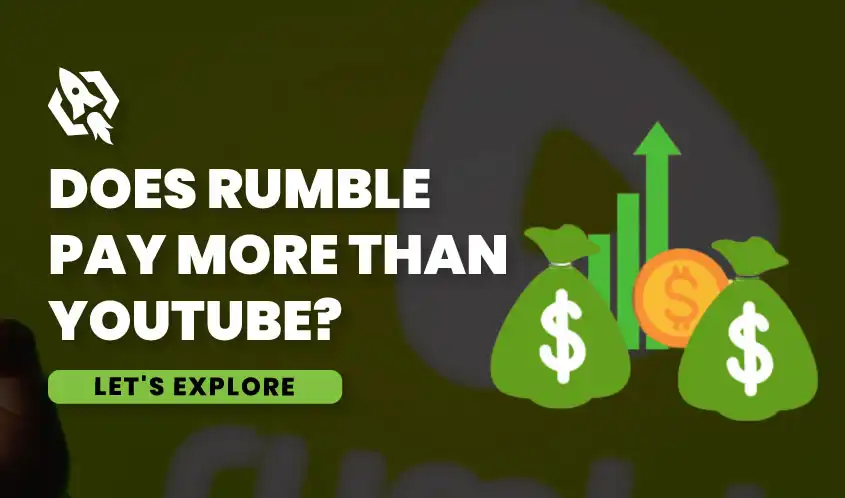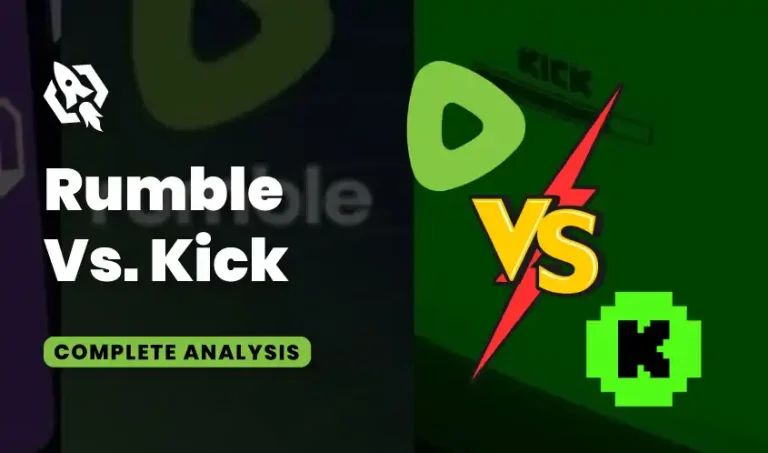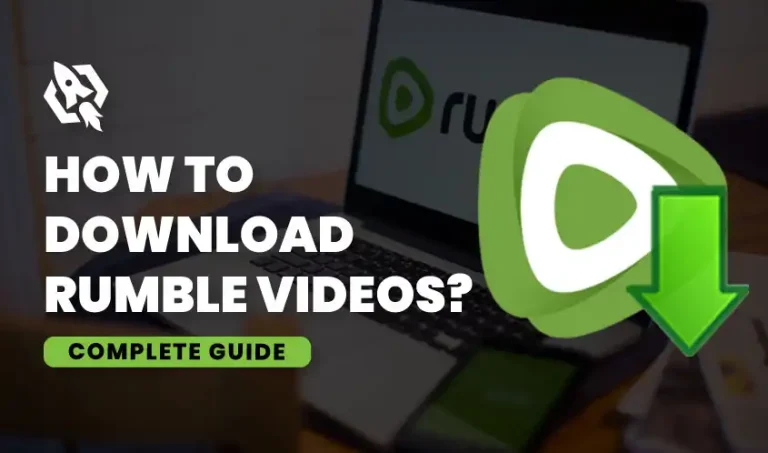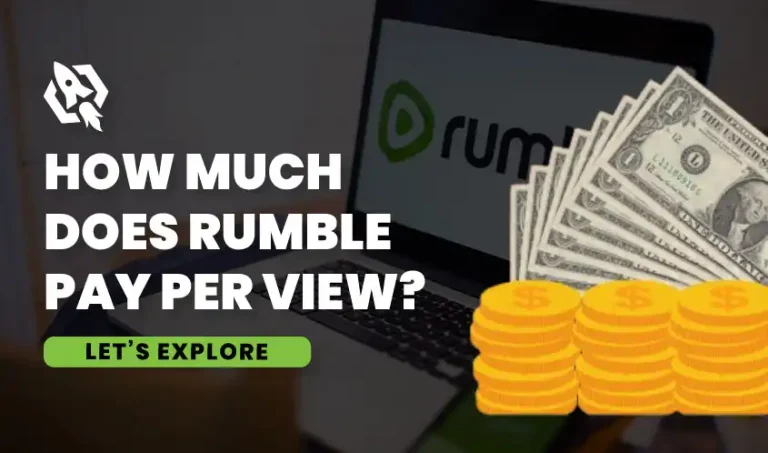The rise of popular video-sharing platforms like YouTube has revolutionized the way content is consumed and created. However, YouTube’s dominance in the market has been challenged by newcomers like Rumble, which promises better monetization opportunities for creators. This blog post aims to explore whether Rumble indeed pays more than YouTube by examining various factors that affect earnings on both platforms. If you’re a content creator or social media user curious about maximizing your earnings, this article is for you.
Overview of YouTube and Rumble
YouTube: The Giant of Online Video
Since its introduction in 2005, YouTube, a Google subsidiary, has grown to become the most widely used video-sharing website globally. It has an astounding amount of content across all genres and over 2 billion monthly log-in users. From educational videos, music, and vlogs to tutorials, reviews, and entertainment, YouTube has it all.
Rumble: The Emerging Contender
Rumble, on the other hand, was founded in 2013 as an alternative video-sharing platform. While it’s not as massive as YouTube, Rumble has been steadily growing its user base. Rumble promises a more creator-focused approach, aiming to provide better monetization opportunities and fewer restrictions on content compared to YouTube. Because of this, it has become a desirable choice for creators trying to add variety to their work.
Goals of Each Platform
YouTube’s Purpose
The purpose of YouTube was to provide a platform for users to upload, share, and watch videos. It has changed over time to fulfill several functions:
- Sharing of Content: Enabling users to submit and share videos globally.
- Entertainment Purpose: Giving performers, musicians, and artists a platform on which to perform for an international audience.
- Learning: Providing a wide range of educational materials, including films, lectures and tutorials.
- Advertising and Marketing: Providing a venue for companies and brands to use targeted advertisements to sell their goods and services.
- Community Development: Enabling creators to interact with their audience and create communities via community postings, live streams, and comments.
Rumble’s Purpose
Rumble’s primary purpose is similar to YouTube’s, but it positions itself with a few key differences:
- Content Sharing: Enabling users to upload and share videos while maintaining more control over their content.
- Monetization: Prioritizing better monetization options for creators, often with fewer restrictions.
- Freedom of Speech: Offering a platform with fewer content restrictions, appealing to creators who may face demonetization or censorship on other platforms.
- Niche Communities: Fostering niche communities that might feel underserved by larger platforms like YouTube.
The Basics of Monetization for YouTube vs. Rumble
YouTube’s Monetization Model
YouTube, owned by Google, operates on an advertising-based revenue model. Here are the primary ways content creators can earn money on YouTube:
- Ad Revenue: Creators earn a share of the revenue from ads displayed on their videos. YouTube takes a 45% cut, and creators keep 55%.
- Memberships on Channels: Subscribers can purchase premium content and benefits on a regular basis.
- Super Chat and Super Stickers: Viewers can pay to have their messages highlighted during live streams.
- Revenue from YouTube Premium: Based on how much a user watches or watch time hours, YouTube Premium subscribers donate a portion of their monthly price to the artists.
Rumble’s Monetization Model
Rumble operates differently from YouTube. It offers multiple ways for creators to monetize their content:
- Rumble Player Licensing: Rumble shares revenue from ads shown through their video player embedded on various websites.
- YouTube Syndication: Creators can allow Rumble to distribute their videos on YouTube and other platforms, sharing the ad revenue.
- Full Management: Rumble offers to fully manage a creator’s content, taking a larger share of the revenue but providing more extensive distribution.
- Direct Uploads: Creators can upload directly to Rumble, keeping 60% of ad revenue while Rumble takes 40%.
Comparing the Revenue Potential of Both Platforms
Comparison of Ad Revenue
- YouTube
Ad revenue on YouTube fluctuates based on several factors:
- CPM (Cost Per Thousand Impressions): Varies dramatically by niche, geography, and audience engagement.
- Ad Format: Skippable ads generally pay less than non-skippable ads.
- Viewer Demographics: Premium advertisers pay more for certain demographics.
On average, YouTube creators report earning between $0.25 to $4 per 1,000 views, although this can vary widely.
- Rumble
Rumble’s ad revenue model can be more straightforward, especially for those who choose direct uploads. With a 60/40 split favoring creators, the CPM rates are typically transparent. Creators often report similar or slightly higher CPMs compared to YouTube, primarily because Rumble’s user base is less saturated with content, leading to potentially higher engagement rates.
Licensing and Syndication
- YouTube
YouTube’s primary focus is on ad revenue, with limited opportunities for licensing and syndication directly through the platform. However, successful creators often find additional revenue streams outside of YouTube, such as brand deals and partnerships.
- Rumble
Rumble actively seeks licensing deals and syndication opportunities for creators. This can result in significant additional revenue streams, especially if your content is picked up by popular websites or networks.
Community and Growth Opportunities of YouTube and Rumble
Although they serve distinct kinds of creators and viewers, both platforms present significant development prospects:
- YouTube
With more than 2 billion active users each month, YouTube provides unmatched community interaction and reach. YouTube Shorts and community posts are two examples of features that give producers a variety of ways to interact with their audience. But because of the intense competition, it could be difficult for new creators to become well-known.
- Rumble
Rumble’s community is smaller but growing rapidly. Its focus on free speech and less restrictive content policies can be attractive to creators who feel constrained by YouTube’s guidelines. Moreover, Rumble’s algorithms can sometimes favor new creators, offering them a better chance to be discovered.
The Role of Algorithms of Rumble and YouTube
- YouTube’s Algorithm
YouTube’s recommendation algorithm is designed to maximize watch time, which can be both a boon and a bane for creators. While it can drive massive traffic to engaging videos, the algorithm can also be unpredictable. Changes in YouTube’s policies or algorithm can significantly impact a creator’s visibility and revenue.
- Rumble’s Algorithm
Rumble’s algorithm is more transparent and often more favorable to new creators. By prioritizing diverse content and less stringent guidelines, Rumble offers a more predictable growth trajectory for creators who produce consistent, high-quality content.
Audience Engagement and Interaction of Rumble Vs YouTube
- YouTube
YouTube’s community features, such as comments, community posts, and live chats, offer extensive ways to engage with viewers. Additionally, YouTube Analytics provides detailed insights into audience behavior, helping creators refine their content strategy.
- Rumble
Rumble’s engagement tools are less developed than YouTube’s but are steadily improving. The platform’s focus on free speech can lead to a highly engaged audience, particularly for politically or socially charged content. Rumble also offers basic analytics, helping creators track their performance.
Benefits of Both Platforms
Benefits of YouTube
- Vast Audience Reach: As the largest video platform, YouTube provides access to a massive global audience.
- Advanced Analytics: YouTube offers robust analytics tools, helping creators understand their audience and optimize their content.
- Monetization Options: Multiple revenue streams, including AdSense, channel memberships, Super Chat, and YouTube Premium.
- SEO Benefits: Being part of Google’s ecosystem, videos on YouTube benefit from strong SEO, often appearing in Google search results.
- Community Building: Tools like comments, live chat, and community posts help creators engage with their audience.
Benefits of Rumble
- Better Monetization: Rumble is known for offering higher revenue shares to creators.
- Content Ownership: Creators maintain more control and ownership over their content.
- Fewer Restrictions: Less stringent content guidelines, appealing to creators concerned about censorship.
- Multiple Revenue Streams: Opportunities for ad revenue, licensing fees, and even direct payments from viewers.
- Growing Platform: As a growing platform, there is less competition, allowing new creators to gain visibility more easily.
FAQs
Rumble generally offers higher revenue shares to creators than YouTube. While YouTube shares 55% of ad revenue with creators, Rumble often splits ad revenue 60/40 or 70/30 in favor of the creator. Additionally, Rumble offers licensing fees and direct viewer payments, which can further boost earnings.
YouTube offers several monetization options, including AdSense revenue, channel memberships, Super Chat and Super Stickers, YouTube Premium revenue, and the merchandise shelf. These options allow creators to diversify their income streams.
Rumble allows creators to license their content to third parties, such as media outlets or other platforms. When a creator’s video is licensed, they earn additional income in the form of licensing fees. This provides another revenue opportunity for Rumble creators.
Yes, Rumble supports direct payments from viewers. Creators can receive financial support from their audience, adding another layer to their monetization strategy. This is similar to YouTube’s Super Chat and channel memberships.
Rumble offers several benefits, including higher revenue shares, content ownership, fewer content restrictions, multiple revenue streams, and a growing platform with less competition. These advantages make Rumble an attractive option for creators looking to diversify their income and reach new audiences.
Conclusion: Which Platform Pays More?
Ultimately, whether Rumble pays more than YouTube depends on various factors, including your niche, audience, and content strategy.
YouTube offers unparalleled reach and a diverse range of monetization options. However, the high level of competition and fluctuating ad rates can make it challenging for new creators to gain traction and maintain consistent revenue.
Rumble provides a more straightforward revenue model with potentially higher earnings for new creators, especially those who can leverage licensing and syndication opportunities. Its less saturated market can offer a better chance for visibility, but the overall audience reach is currently smaller.
For content creators looking to maximize their earnings, a hybrid approach might be the best solution. By leveraging both platforms, you can diversify your revenue streams and take advantage of the unique benefits each offers.




